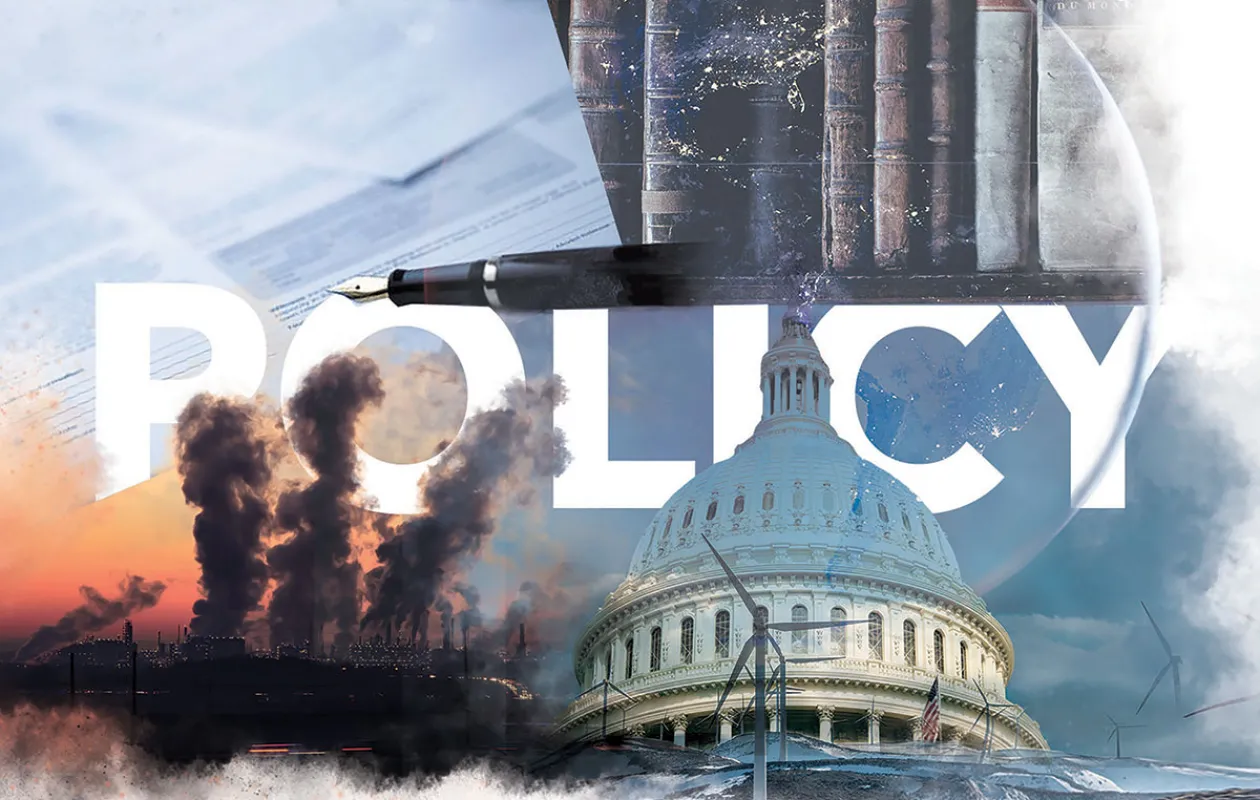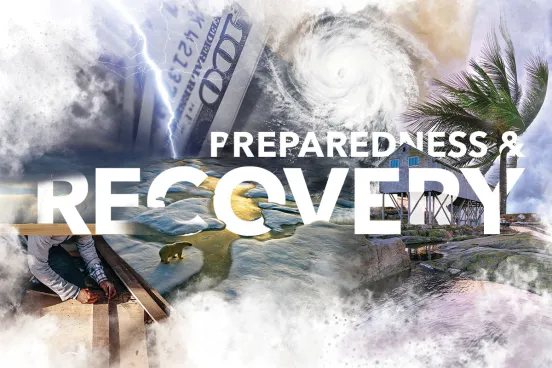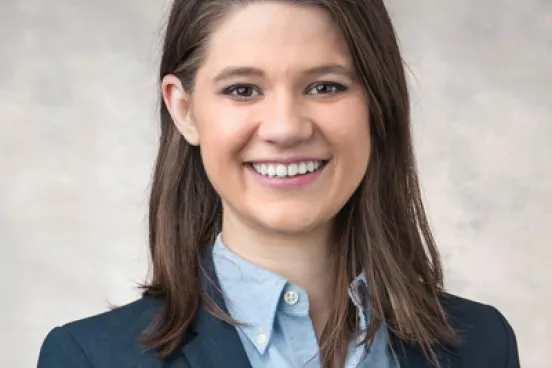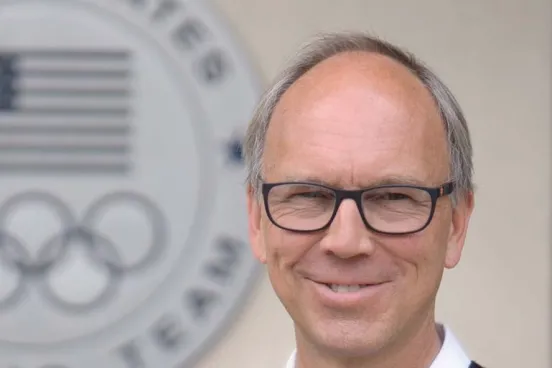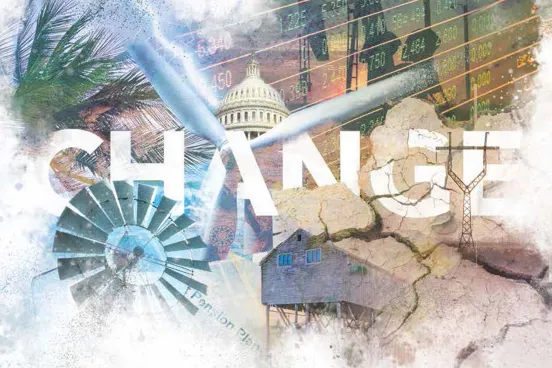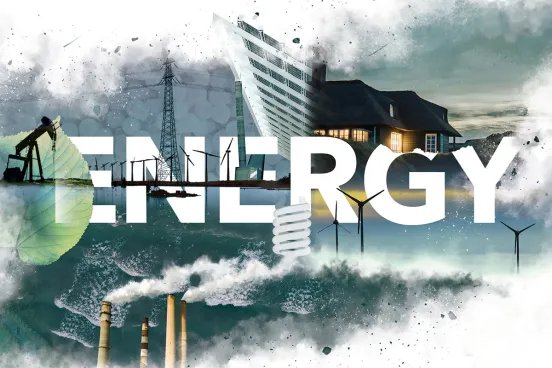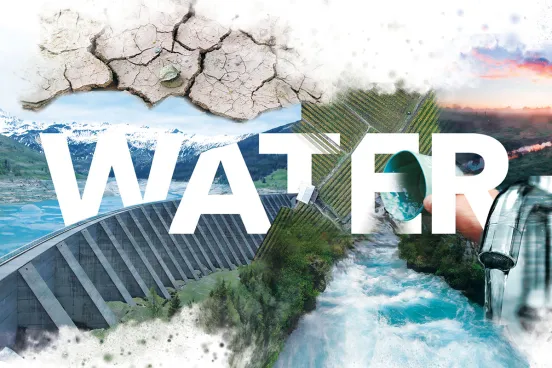Aaron Cutler, ’04, thought the meeting was too risky, and he told his boss so.
“I said, ‘Eric, if it gets out in the press, it won’t look good.’ And Eric replied, ‘Just because we disagree with somebody doesn’t mean we shouldn’t meet with them. When we meet with people, we learn.’”
At the time, Cutler’s boss, House Majority Leader Eric Cantor [R-VA], was known for toeing the party line. But against Cutler’s advice as his senior adviser for policy and outreach, Cantor agreed to meet with a Harvard University professor in 2014 to talk about climate change.
“The first thing the professor told us was that he wasn’t trying to ban fossil fuels and he wasn’t trying to set goals for the next decade. He said that he just wanted to make sure we have policies in place now so that in 100 years, we’re much better off than we otherwise would be. And I said, ‘Well, with that line of thinking, we can actually work together.’”
Fred Krupp, ’78, President, Environmental Defense Fund“How do you find a bipartisan path forward? Some Democrats, some Republicans, and some Independents have to step forward, stand tall, and show leadership.”
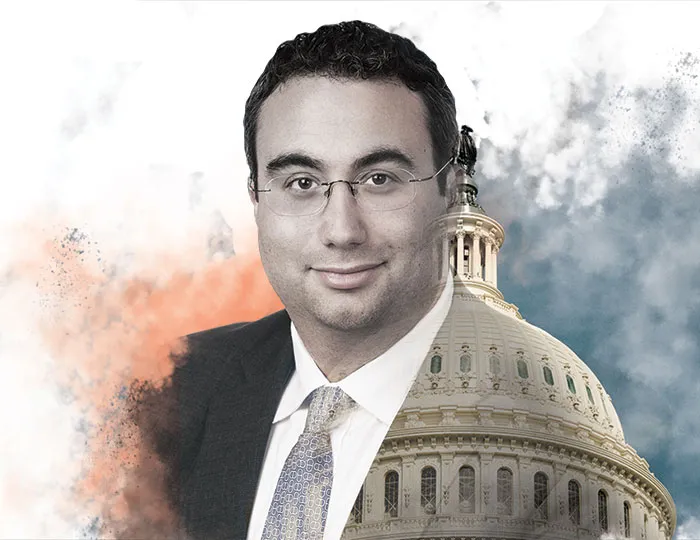
How climate change became a partisan issue
Working together on climate change has been a tough sell inside the Beltway in recent years. Once upon a time, way back in the early 2000s, Senators John McCain [R-AZ] and Joseph Lieberman [D-CT] introduced the first bipartisan cap-and-trade bill; versions of that bill were introduced with bipartisan support through 2007.
As recently as 2008, a presidential campaign ad for McCain touted him as having “sounded the alarm on global warming.” Today, the president has said that climate change is a hoax perpetrated by the Chinese, the Environmental Protection Agency (EPA) administrator has disputed scientific evidence that carbon emissions from human activity are the main driver of climate change, and a senator brought a snowball to the Senate floor to dispute claims that 2014 was the hottest ever recorded.
What happened?
Many say that extremist views have become more extreme—fueled by the spotlight of a 24/7 news cycle and special-interest money unleashed in the wake of the U.S. Supreme Court’s 2010 Citizens United decision, which held that corporations and unions have a First Amendment right to spend money to support or denounce candidates for office. “On both sides, I think part of the problem is you have bloggers and media who, if they see a Democrat-Republican meeting, will think there’s some conspiracy afoot that is going to undermine the party,” says Cutler, who now is a partner in the D.C. office of Hogan Lovells. “But as loud as those voices can be, policy is made inside the Capitol and the White House, and while we aren’t going to see a Climate Change Act of 2018, I think there are ways that we can make incremental progress forward.”
Incremental progress is not enough, argues David Van’t Hof, ’94, a senior Fellow at Climate Solutions who also advises clients like National Grid through his policy and transactional law practice, based in Portland, Oregon. “Scientific consensus tells us that we have reached a stage of urgency to radically reduce greenhouse gas emissions and keep the planet from heating up further in order to avoid the worst of the destabilizing conflicts that will be caused by droughts, increased forest fires, and large-scale displacement of communities. It doesn’t look like our federal government is capable of addressing the issue in the near term, so it will continue to fall on states and cities to push for decarbonization of our economy.”
Finding middle ground
Environmentalists decried the ascension of Scott Pruitt as administrator of the EPA—a climate change denier who repeatedly sued the EPA when he was Oklahoma’s attorney general. But Fred Krupp, ’78, the president of the Environmental Defense Fund (EDF), says Pruitt’s agenda actually could help Washington reach meaningful action on climate change. “The fact that Administrator Pruitt’s views on climate change are so extreme has created both a desire and a need for many on Capitol Hill to separate themselves from that radical denialism,” Krupp says. “So we are seeing within Congress the emergence of more leadership on that basis.”
Cutler and Krupp both point to the Climate Solutions Caucus, a bipartisan group of members of the U.S. House of Representatives, as an important step forward. The caucus was founded in 2016 by two U.S. representatives from Florida—Republican Carlos Curbelo and Democrat Ted Deutch—whose districts are on the front line of the extreme weather events and rising sea levels that are widely attributed to climate change. The caucus currently boasts 74 members, equally divided between Republicans and Democrats. Members include Fred Upton [R-MI], the former chairman of the House Committee on Energy and Commerce and current chairman of the Subcommittee on Energy who has a lifetime score of just 26 percent from the League of Conservation Voters. “In terms of putting aside the most extreme positions on either side and trying to find common cause, I think someone like Fred can be very valuable,” says Cutler, who served as Upton’s deputy policy director and counsel during part of his tenure as committee chair. “He can help drive the push for common-sense, incremental policy that we try, then evaluate, then decide whether to build on that policy or go in a different direction. Finding those opportunities is the key.”
Another important factor is state-driven initiatives, notes Cutler. “They’re the incubators, and sometimes, on energy policy, seeing states do certain things can be a way to see if it would work on the federal level.”

States take action
For many years, the West Coast states have been the biggest, brightest-burning incubators when it comes to combatting climate change. In 2007, the governors of Arizona, California, New Mexico, Oregon, and Washington created the Western Climate Initiative (WCI), with the goal of developing a multisector cap-and-trade program to reduce greenhouse gas emissions in the electricity, natural gas, and transportation sectors. Under a cap-and-trade system, regulated businesses must hold an allowance for every ton of carbon they emit. If they emit less carbon, they can sell extra allowances to other businesses; if they need more, they can buy them from those businesses who are selling their overage.
Spearheading Oregon’s participation in the WCI was Van’t Hof, who at the time was senior policy adviser for sustainability to Gov. Ted Kulongoski. Van’t Hof clerked for Kulongoski on the Oregon Supreme Court shortly after graduating from law school, and Kulongoski lured him out of private practice to be the first sustainability policy adviser for any U.S. governor. As an associate in the natural resources practice at Stoel Rives LLP in Portland, Van’t Hof had developed an interest in water rights law and alternative energy—wind farms were becoming a booming business in Oregon at the time—“and from there the governor and I started talking more about the broader issue of climate change,” he says.
The WCI expanded to include several Canadian provinces, but political changes in several statehouses, as well as shifting priorities in the midst of the Great Recession, led to all states except California withdrawing as partners by 2011. Oregon and Washington have not been able to secure legislative authorization to join; today just California, Ontario, and Quebec have implemented the cap-and-trade program. But Van’t Hof says the WCI’s success lies in the fact that a framework for a regional, economy-wide carbon market now exists, and is being used by three entities separated by geographic distance and a national border. “We’ve seen that it can work, and I think in Washington [State] and Oregon, the momentum is swinging back that way. A lot of foundations and donors who want to address carbon emissions now see, with the current administration in D.C., that the regional, state, and local levels are the best way to do so.” Van’t Hof believes that Washington State likely will have a carbon tax proposal on the November 2018 ballot, and is hopeful that Oregon will pass its own cap-and-trade bill—and authorization for joining the WCI—in the 2019 legislative session.
During his time on Kulongoski’s staff, Van’t Hof also led the state’s adoption of a renewable portfolio standard (RPS), which mandates a percentage of the state’s electricity come from non-fossil-fuel sources like wind and solar. The original bill, passed in 2007, called for 25 percent of Oregon’s energy usage to be renewably sourced by 2050; in 2016, the Coal to Clean bill modified the RPS to 50 percent by 2040. Heralded as one of the first really aggressive RPSs in the country, Oregon’s 2007 legislation was the culmination of years of negotiating and consensus building on Van’t Hof’s part. “In Oregon, there’s a three-legged stool of energy and climate policy—activists, utilities, and the business community. You need two of the three legs to get something done, legislatively. Large industry and the business community mostly stayed opposed, but once the utilities saw that the legislation had a good shot at happening, they got on board so that they could help shape it in a way that they could live with. That’s when an RPS became something that we could pass.”
The state was able to pass an even more aggressive RPS in 2016 because “the naysayers were proved wrong,” says Van’t Hof. “Those opposed to the RPS said utility rates would skyrocket and it would be bad for the economy, so we put an out-clause into the legislation if rates went up by more than 4 percent on account of complying with the RPS. But no one ever had to exercise it.” Instead, Van’t Hof says, the RPS resulted in no rate increases, while counties where wind turbines were erected saw and continue to see millions of dollars of new property tax revenues, as well as an influx of jobs because large renewable energy companies like Vestas, Avangrid Renewables, and Solar World have established their North American headquarters in the state. There also is reason to believe that 50 percent RPSs soon may be passed over in favor of 100 percent clean energy programs. Hawaii already has authorized 100 percent clean energy. California and Washington, as well as less likely states like Colorado, Maryland, and Pennsylvania, also have legislative proposals under consideration.
Cap-and-trade also has the potential to stimulate the economy, Van’t Hof adds. “Cap-and-trade forces mitigation of climate change because it makes greenhouse gas emitters reduce those emissions. It also creates a new revenue pool that we can invest toward further mitigation measures like more energy efficiency and more renewable energy, as well as forest thinning and wildfire management, coastal reinforcement, and other investment pathways that are more on the adaptation side of the problem.”
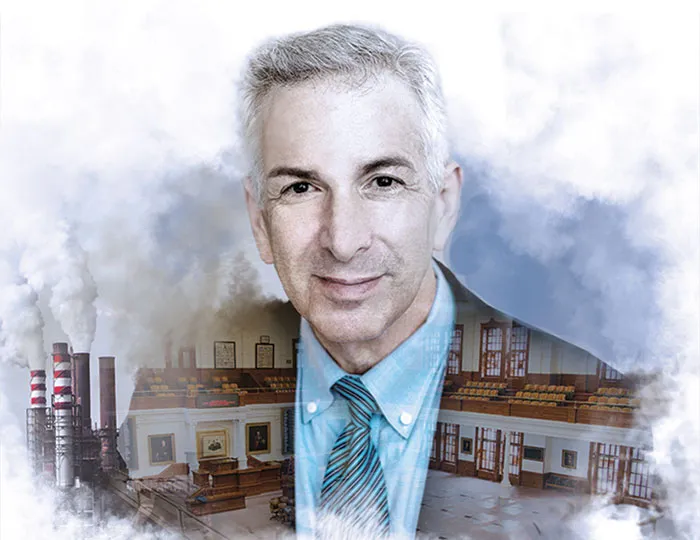
Incentivizing innovation
In his 34 years as the leader of the Environmental Defense Fund (EDF), Krupp has played an active role in innumerable policy discussions—with all of the accompanying starts, stops, restarts, and right (and left) turns. Yet he says that he is more hopeful today than he has ever been about the world’s ability to curb manmade damage to the environment and points to regional cap-and-trade programs as a big reason why. “When we put a price on carbon, we put the powerful engine of capitalism to work to find the solutions we need. We incentivize innovation.”
When U.S. Representatives Henry Waxman [D-CA] and Edward Markey [D-MA] brought the American Clean Energy and Security Act to a vote in 2009, Cutler was energy counsel to Rep. Joe Barton [R-TX], the chair of the House Committee on Energy and Commerce. Known as the Waxman-Markey Bill, the legislation, which narrowly passed the House and never came to a vote in the Senate, called for a nationwide cap-and-trade system to control carbon emissions. “It was flawed legislation because it had so many giveaways,” Cutler says. “They were cutting deals on the House floor to get the votes. Because of that experience, I can’t help but think that cap-and-trade is fundamentally flawed. I just don’t see how it works.”
Krupp says that putting a price and declining limit on carbon is EDF’s top priority related to climate change. And he says he can see how it works because he has seen it working. “It has been successful in California and with the Regional Greenhouse Gas Initiative in the Northeast. When we find a way to have a similar system nationwide and worldwide—wow. The progress will happen much faster than anyone can now imagine.”
He stresses that cap-and-trade is just one way to price carbon; another is to establish a carbon tax, which will work, Krupp says, if it contains an environmental integrity mechanism that links the tax to a pollution reduction goal, adjusting the tax over time, if necessary, to ensure the goal is met. Regardless of the path that countries and states pursue, achieving the goal matters most to EDF. “We should be flexible as to how we price carbon, so long as we’re sure it’s going to get the job of cutting emissions done.”
EDF also has been working in Europe and China to help governments construct carbon-pricing systems. About 30 percent of the organization’s work now is outside the United States, and Krupp expects that number to grow. He calls Chinese President Xi’s commitment to carbon pricing “a very encouraging development. The amount of cuts that we need to make can only be achieved by everyone pitching in and every country pitching in.”
Krupp believes countries’ and businesses’ willingness to pitch in has and will continue to increase significantly because of the transparency of today’s world. “It’s easier now for people to see the impact of decisions. Reputations, despite the attempts at spin and PR, are increasingly being determined by actual facts.” EDF has long been at the forefront of establishing environmental partnerships with large corporations, including McDonald’s Corp. and Wal-Mart Stores Inc. “It’s in the interest of businesses to be good citizens and minimize their pollution because their customers want it—and their customers are likely to know if they’re failing to do so,” notes Krupp.
The result, says Krupp, is the potential for momentum beyond what he’s experienced in his tenure at EDF. “Despite the obvious obstacles in Washington, we’re starting to have the wind at our back in the environmental community, whereas for a lot of my career, we’ve had the wind in our face.” But the challenge is how to harness the momentum into tangible impact. “What we need is a race to the top, where states and businesses, politicians and elected officials, are all looking to demonstrate leadership. That’s when we win.”


